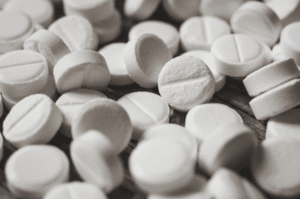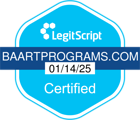Managing pain is a difficult task for physicians and patients alike. When someone is experiencing acute or chronic pain, the goal is to reduce it safely and swiftly. When used according to a doctor’s prescription, oxycodone is a powerful painkiller that serves a necessary purpose. However, when a person begins to use the drug in ways other than intended, or uses it for recreational effects, they may begin to show signs of addiction. Anyone can struggle with addiction to opioids, and understanding how the drug works is crucial to helping yourself or another person begin recovery from oxycodone addiction.
What is Oxycodone?
As an opioid, oxycodone is part of a group of drugs derived from the opium poppy. Other drugs that share the opioid classification include morphine and heroin. Oxycodone is a semi-synthetic opioid, which means it is partially human-made. Manufacturers create it through the modification of an organic chemical called thebaine, also known as paramorphine.
Oxycodone can be a stand-alone formulation, but drug makers also combine it with other compounds to create medications. Brand names for oxycodone include:
- Roxicodone
- Xtampza ER
- Oxaydo
- OxyContin
It is common to see oxycodone combined with acetaminophen to create:
- Roxicet
- Xartemis XR
- Percocet
Other drugs containing oxycodone combine it with aspirin or ibuprofen. Doctors prescribe oxycodone for severe, round-the-clock pain relief, especially for individuals who cannot safely use other medications. It often comes in extended-release tablets or capsules to provide long-lasting pain relief for people who are used to the effects of opioid medications.

How Does Oxycodone Work?
Like any drug, opioids act on the brain to produce effects throughout the body. Our brains have receptors that are specifically designed to attract both natural and external opioids. When external opioids enter the brain, they seek out these receptors and bind to them, creating a variety of physical and mental effects. The primary effects include pain reduction, sedation, and a sense of euphoria.
Opioids primarily trigger the release of dopamine, a chemical that is part of the brain’s reward system. When you hear a favorite song, spend time with a loved one, or enjoy a tasty treat, your brain releases a little bit of dopamine, which boosts your mood and reinforces the idea that whatever you just experienced is worth doing again.
This reward system generally reinforces behaviors you need to survive or behaviors that are not harmful when enjoyed in moderation. Drugs like oxycodone change that.
Oxycodone delivers a surge of dopamine that far outweighs what your brain produces on its own in response to normal stimuli. Eventually, oxycodone causes your brain to produce less dopamine naturally, while making you feel like you cannot function normally without taking the drug regularly.
The brain gets used to you giving it massive doses of reward chemicals from drugs and stops manufacturing its own. At this point, abuse and addiction become serious concerns.
Key Signs of Oxycodone Addiction
Identifying oxycodone or another type of opioid addiction is not always easy. If a person is obtaining painkillers illegally, there is no question they are misusing them — but most people start by getting the prescription from their doctor. Recognizing the transition from medical use to misuse is critical when identifying key signs of oxycodone addiction. Here are some physical indicators:
- Drowsiness or nodding off
- Extreme sedation
- Euphoria
- Dizziness or lightheadedness
- Itchiness
- Nausea and vomiting
- Constipation
- Lowered blood pressure
- Suppressed breathing
- Headaches
- Dry mouth
- Excessive sweating
If you are concerned about a loved one, it may not be easy to identify physical signs. People instinctively try to hide their drug use, even if they do not realize they are doing so. They may avoid taking the drug for long enough to appear normal during social interactions, making it difficult to spot the signs.
However, addiction has strong emotional and behavioral elements you can use to identify oxycodone misuse. As drug use progresses, opioids will actually “re-wire” the brain to completely change a person’s priorities in ways that become more obvious over time. Look out for these more subtle signs of oxycodone addiction:
1. Loss of interest
After prolonged use of drugs, normal activities do not have the same luster and do not make people as happy. Someone with an opioid dependency may drop their favorite hobby unexpectedly or seem to have a flat affect typical of depression.
2. Social withdrawal
Individuals addicted to opioids may lose interest in people as well as activities. They may stop texting you, fail to return calls, and come up with excuses not to hang out.
3. Shifting friend groups
Drug misuse often has a social element, if only because people have to seek new sources of the drug. An individual who is addicted to drugs may start running in new, strange social circles based on their opioid misuse.
4. Secretiveness
Drug addiction is not sustainable, and most people know that deep down. They may appear closed off and unwilling to discuss anything that even has a chance of relating to opioids.
5. Diminished sense of responsibility
As oxycodone addiction becomes more severe, individuals may begin to drop responsibilities one by one. It often starts with missing work or school more often and soon extends to skipping basic needs like personal hygiene and nutrition.
6. Increased cravings
An individual who is addicted to drugs will find themselves thinking about opioids all the time, seemingly becoming blind to more important issues, such as what is going on with family and friends.
7. Risky behavior
When a person becomes addicted to a substance, they will go to extraordinary lengths to get more of it. An individual may seek multiple doctors to get more prescriptions or turn to illicit channels to get more opioids.
When you identify any of these traits emerging, it is time for you or your loved one to take a hard look at oxycodone use and seek appropriate treatment.
Side Effects of Oxycodone
In addition to the strong potential for addiction, side effects of oxycodone can permanently damage the body. Oxycodone, including opioids like OxyContin and Percocet, have a negative impact on almost every bodily system. Here are some of the side effects:
- Gastrointestinal: About 40 to 45 percent of patients taking opioids experience chronic constipation and nausea. In some cases, opioids have been known to cause internal bleeding and bowel obstruction.
- Respiratory: Opioid use depresses the respiratory system and links to sleep apnea and other conditions characterized by disordered breathing.
- Cardiovascular: Opioids increase the risk of cardiovascular events, such as heart attacks and heart failure, by 77 percent.
- Central nervous system: Medical researchers are still investigating the effects of opioids on the nervous system. The neurotoxicity of opioids can lead to symptoms like heightened sensitivity to pain and depression levels that are 38 percent higher than in those who do not take them.
- Musculoskeletal: Opioids can increase the risk of fractures, which is most dangerous for elderly patients but can cause severe problems for anyone down the line.
- Endocrine: Taking opioids significantly impacts the production of every hormone, which can lead to infertility and fatigue.
Essentially, long-term use of oxycodone wears down the body in multiple ways. People who have misused opioids for months or years often report feeling generally run down and sick, even if they cannot identify any specific symptoms.
Withdrawal is also a side effect of long-term oxycodone use. It is the body’s response to the absence of the addictive drug, and its unpleasant effects are often enough to drive an individual who is addicted to drugs back to using the substance. Withdrawal symptoms often mimic a bad flu, so if you stop using opioids abruptly, you can expect the following symptoms:
- Sweating
- Chills
- Nausea and vomiting
- Muscle cramps
- Aches and pains
- Dehydration
- Itching
- Headaches
- Restlessness
- Anxiety and paranoia
- Rapid heartbeat
In severe cases, these symptoms may be life-threatening. It is critical to stop using oxycodone under medical supervision.
Oxycodone Addiction Treatment
It can be nerve-wracking to consider that you might be addicted to a prescription painkiller like oxycodone. There are a few things to keep in mind when deciding what to do next. It is critical to remain calm when considering your options. Addiction often develops when people use drugs as a response to stress, so if you start panicking, it may increase your craving for the drug.
If you can, enlist the help of a friend or family member you trust for support. Sharing your decision to seek appropriate treatment can help you by creating a level of accountability with your loved ones.
Help is available for people who are serious about ending their addiction to opioids. The most effective form of treatment, used successfully since the 1970s, is methadone maintenance treatment. It is a form of medication-assisted treatment (MAT) in which participants receive daily doses of methadone that keep oxycodone withdrawal symptoms at bay.
Methadone works by binding to the same receptors as oxycodone, but when a therapeutic dose is taken as directed, it will not produce the same euphoric high. Instead, it eliminates the withdrawal symptoms and cravings that occur in the absence of opioids, allowing patients to focus on other elements of long-term recovery.
Buprenorphine, the primary component of Suboxone, is also a good medication-assisted treatment option for oxycodone addiction.
Methadone clinics are becoming more common in many areas of the U.S. in response to the opioid crisis. Your first step should be to research treatment centers in your area and choose a program that is right for you.
Begin Your Recovery Journey at BAART Programs
Addiction is a personal struggle, and gathering the courage to seek the help you need is no easy feat. At BAART Programs, we respect your commitment to recovering from addiction, and we match it with our dedication to compassionate, effective treatment. In addition to our buprenorphine and methadone treatment programs, we offer substance use counseling that is critical to a successful recovery from oxycodone or other opioid addiction.
By minimizing withdrawal symptoms through MAT and providing substance use counseling to develop your coping skills, we equip you with the necessary tools for a successful journey to recovery. If you are ready to reclaim your life from oxycodone, BAART Programs is here to help.
Find a treatment center near you and learn more about our services by calling or using our online contact form to get in touch with our caring and expert representatives today.






